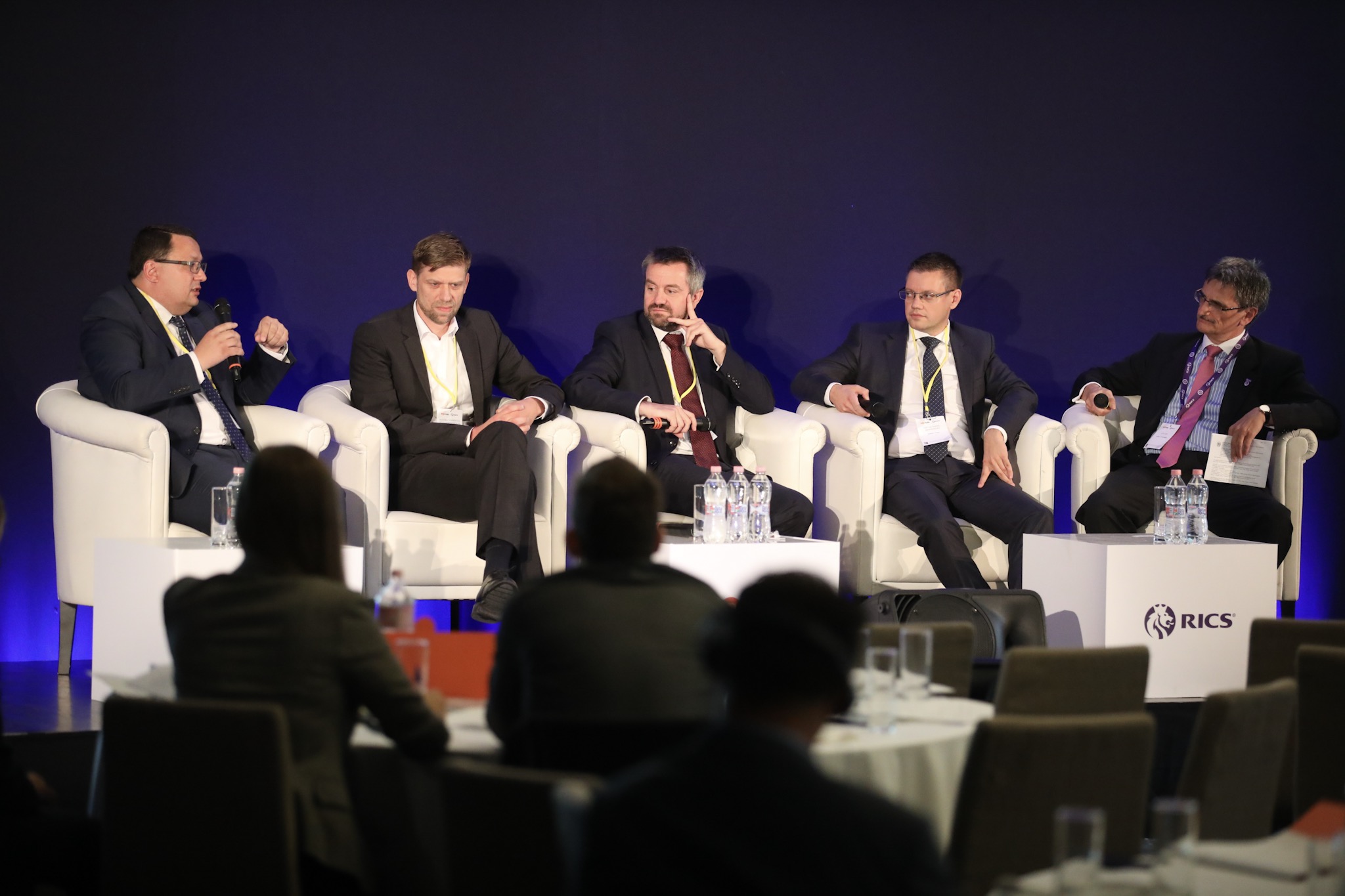
Political risk seems not to be affecting the performance of CEE markets. Members of the investment panel at the Portfolio-RICS Valuation & Investment 2018 conference in Budapest are confident about the future of the market and view industrial/logistics and retail as the most attractive asset classes.
Many believe that the CEE investment market is very close to the peak, highlighted Péter Számely MRICS, Head of Real Estate Finance CEE, HYPO Niederösterreich, the moderator of the CEE investment panel.
We need to observe trendsetting markets, added Grzegorz Ryszka, Head of Transactions CEE at CBRE Global Investors Poland. Key indicators from Germany and France suggest that we may already have passed the peak. Political risk can cause temporary liquidity issues, but rising interest rates will have a quick and direct effect, he added.
Looking at individual markets, he sees more problems on the Polish market and believes that the Czech Republic, Slovakia and Hungary are still coming up, whereas Romania may cool down before it truly heats up.

Investors have learnt to live with global political, so we’re okay for the time being, added Michael Edwards MRICS, Head of Valuation & Advisory Central Europe and Head of Capital Markets Hungary at Cushman & Wakefield. He believes that the Budapest market is still underpriced and investors going after prime office buildings are in a good and future-proof position as tenants are looking for the best quality offices in large numbers, but there is a lack of new supply on the market.
Adrian Karczewicz, Head of Divestments CEE at Skanska Commercial Development Europe is optimistic about the future of the CEE investment market. He thinks that as long as bond rates stay this low and yields in CEE stay relatively high, the market will continue to boom. As an investor he recommends looking into cities such as Budapest and Warsaw, where demand for office space is higher than supply and rents are rising.
He explained that the growing presence of domestic and cross-CEE capital in the region underpins market stability. Providing an insight into this phenomenon he highlighted that Czech investors’ activity is fuelled by tax incentives and that Polish investors are not so active for some reason. Czech investors are actually more active in Poland than Polish investors, Grzegorz Ryszka added.
Michael Edwards thinks that the industrial sector is the one to look out for and Grzegorz Ryszka named the Czech industrial/logistics market as the most attractive segment from an investor’s perspective. He also considers retail an attractive asset class because of rental growth, but only prime assets in large cities as secondary cities can face liquidity issues. CBRE Global Investors also find Budapest and Bratislava attractive and are slowly looking into Bucharest again, he added.
Panel members agreed that student housing is an interesting asset class, but it lacks volume at the moments. Grzegorz Ryszka thinks that local investors should start buying up the existing stock so that they could sell to international players when the market becomes less fragmented.
The Polish expert sees new sources of capital, such as Korean, Malaysian, Singaporean, on the market as well. In his experience, some major international players can’t find assets that are massive enough (in terms of size and value) in some CEE capitals.



